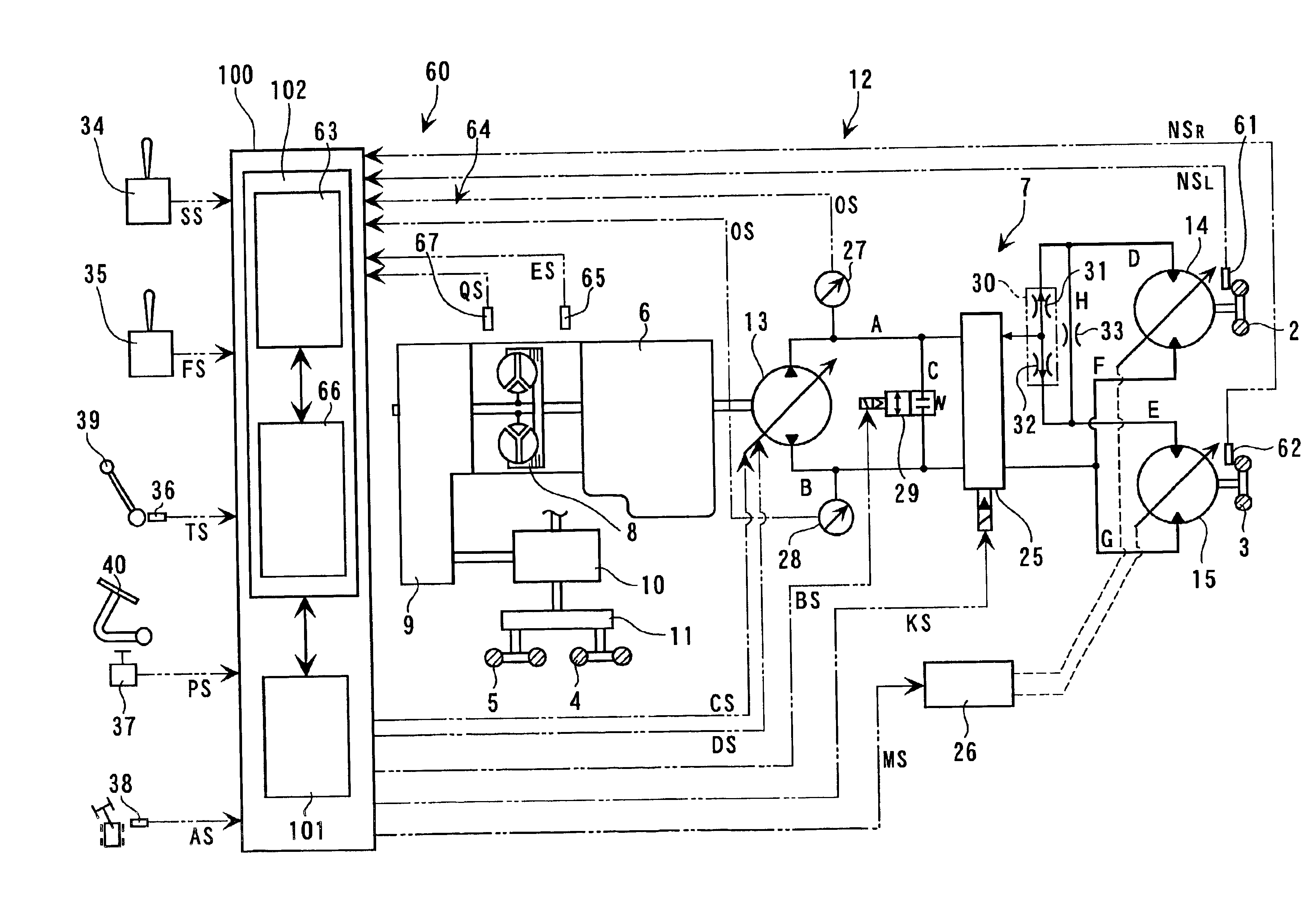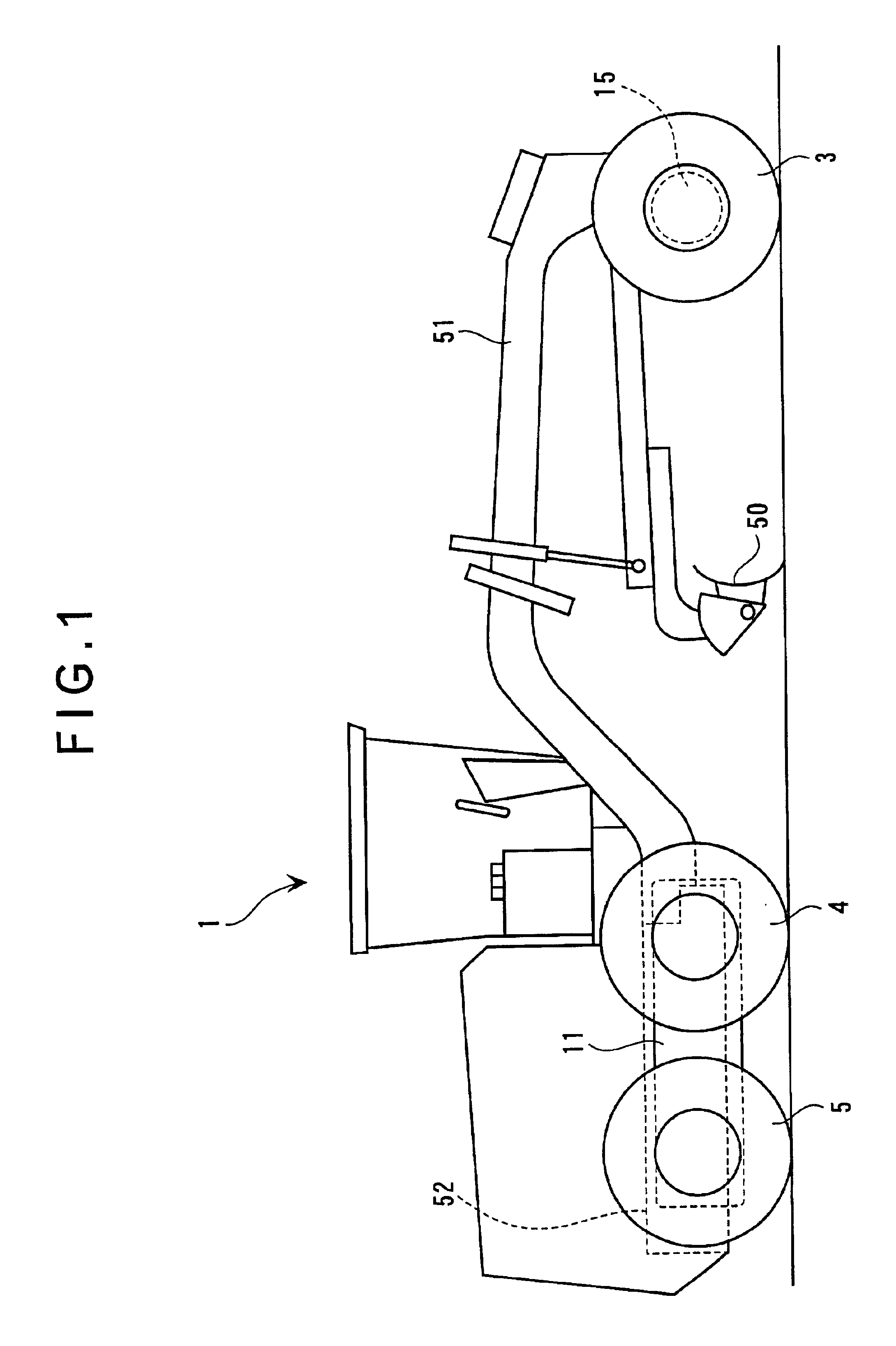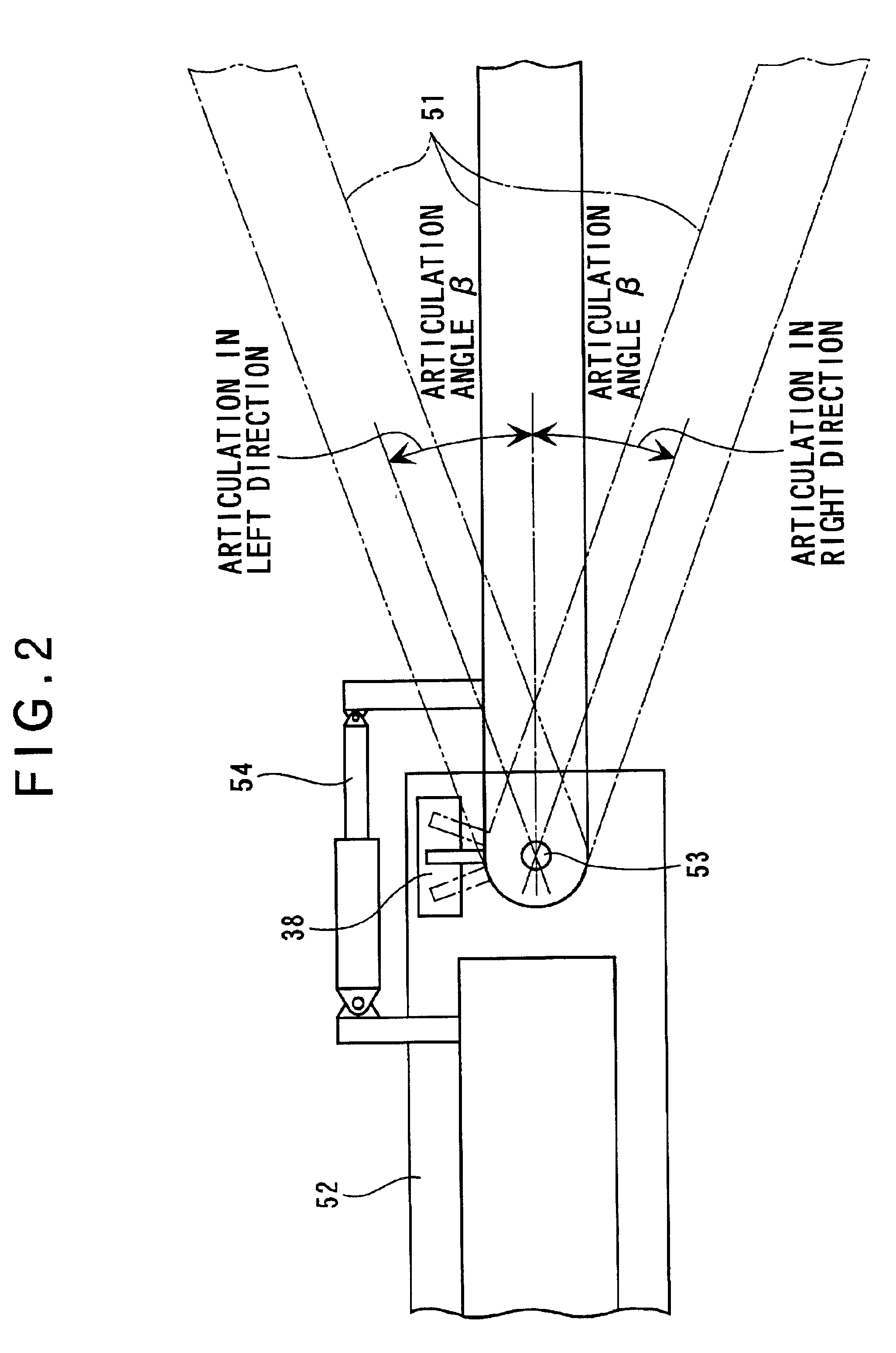Steering-wheel revolution number correction system of all-wheel-drive vehicle
a technology of all-wheel drive and revolution number, which is applied in the direction of steering linkage, non-deflectable wheel steering, transportation and packaging, etc., can solve the problem that the inner race difference between the front and rear wheels during the turning movement cannot be completely absorbed, the vehicle cannot turn smoothly, and the tight-corner braking phenomenon cannot be securely prevented. the effect of restrainting the tight-corner braking phenomenon
- Summary
- Abstract
- Description
- Claims
- Application Information
AI Technical Summary
Benefits of technology
Problems solved by technology
Method used
Image
Examples
first embodiment
[First Embodiment]
FIGS. 1 to 5 show a motor grader 1 as an all-wheel-drive vehicle according to first embodiment of the present invention applied with the steering-wheel revolution number correction system of the present invention.
In FIGS. 1 and 2, the motor grader 1 is a vehicle having total six wheels, i.e., a pair of front wheels of a left front-wheel 2 and right front-wheel 3, and rear-wheels which are provided in pairs on both sides, the rear-wheels including left rear-front wheel and left rear-rear wheel (not shown) and a right rear-front wheel 4 and a right rear-rear wheel 5, where a blade 50 provided between the front-wheels 2 and 3 and the rear-wheels 4 and 5 levels the ground, removes snow, cuts with low load and mixes material, etc.
The front-wheels 2 and 3 as well as the blade 50 are mounted on a front frame 51 and the rear-wheels 4 and 5 are mounted on the rear frame 52. As shown in FIG. 2, the front frame 51 is rotatably connected to the rear frame 52 by a vertical cent...
second embodiment
[Second Embodiment]
Next, a second embodiment of the present invention will be described below.
The second embodiment includes a steering-wheel revolution number correction system 160 instead of the steering-wheel revolution number correction system 60 of the first embodiment. Accordingly, the description for common components will be omitted and the description will be concentrated on the steering-wheel revolution number correction system 160 as a different component.
In FIG. 10, the steering-wheel revolution number correction system 160 includes a left pickup sensor 161 as a steering-wheel revolution number detecting means for detecting the revolution number of the left front-wheel 2, a right pickup sensor 162 as another steering-wheel revolution number detecting means for detecting the revolution number of the right front-wheel 3, a turning radius operation 163 for determining the turning radius of the front-wheels 2 and 3 based on the revolution number of the front wheels 2 and 3, ...
PUM
 Login to View More
Login to View More Abstract
Description
Claims
Application Information
 Login to View More
Login to View More - R&D
- Intellectual Property
- Life Sciences
- Materials
- Tech Scout
- Unparalleled Data Quality
- Higher Quality Content
- 60% Fewer Hallucinations
Browse by: Latest US Patents, China's latest patents, Technical Efficacy Thesaurus, Application Domain, Technology Topic, Popular Technical Reports.
© 2025 PatSnap. All rights reserved.Legal|Privacy policy|Modern Slavery Act Transparency Statement|Sitemap|About US| Contact US: help@patsnap.com



